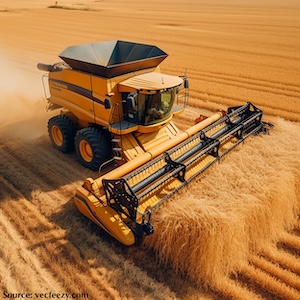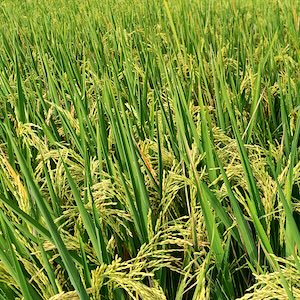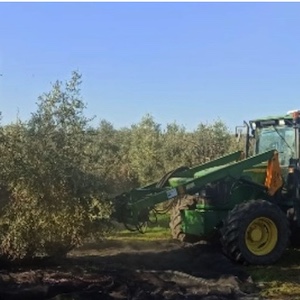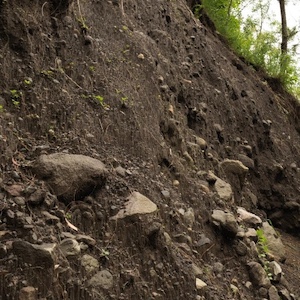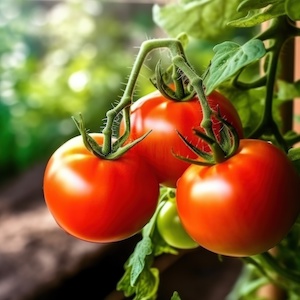Guidelines for Authors
The Journal of Agricultural Engineering publishes the following article types:
Manuscripts will be carefully scrutinized for evidence of plagiarism, duplication and data manipulation; in particular, images will be carefully examined for any indication of intentional improper modification. Any suspected misconduct ends up with a quick rejection and is then reported to the US Office of Research Integrity.
The Corresponding Author must submit the manuscript online-only through our Manuscript Submission System.
The Publisher and Editor regret that they are not able to consider submissions that do not follow this procedure.
Research data
Authors submitting their research article to JAE are encouraged to deposit research data in a relevant data repository and cite and link to this dataset in their article. If this is not possible, authors are encouraged to make a statement explaining why research data cannot be shared. There are several ways you can share your data when you publish with PAGEPress, which help you get credit for your work and make your data accessible and discoverable for your peers.
Below some available repository:
https://zenodo.org/communities/solace/?page=1&size=20
https://zenodo.org/communities/sae-eth/?page=1&size=20
https://zenodo.org/communities/soilcare/?page=1&size=20
https://nomad-lab.eu/repo-arch
Submission checklist
You can use this list to carry out a final check of your submission before you send it to the journal for review. Please check the relevant section in this Guide for Authors for more details.
Ensure that the following items are present
One author (multiple corresponding authors are not allowed) has been designated as the corresponding author with contact details:
- E-mail address
- Full postal address
All necessary files have been uploaded
- Manuscript file
- Include keywords (no more than seven)
- All figures (include relevant captions)
- All tables (including titles, description, footnotes)
- Ensure all figure and table citations in the text match the files provided
Further considerations
- Please prepare your manuscript for the single-blind peer review;
- Ensure that all references mentioned in the Reference List are cited in the text, and vice versa
- Permission has been obtained for use of copyrighted material from other sources (including the Internet)
- A competing interests statement is provided, even if the authors have no competing interests to declare
- Journal policies detailed in this guide have been reviewed
- Referee suggestions and contact details provided, based on journal requirements
- Manuscript has been 'spell checked' and 'grammar checked'. Ensure that your work is written in correct English before submission. Note that submitted manuscripts will not go through language-focused copyediting with the journal prior to or after acceptance; language-focused copyediting is the responsibility of the authors before submission. Professional copyediting can help authors improve the presentation of their work and increase its chances of being taken on by a publisher. In case you feel that your manuscript would benefit from a professional English language copyediting checking language grammar and style, you can find a reliable revision service at:
Desk reject criteria
The editorial team and the Editor-in-Chief of the Journal of Agricultural Engineering use desk review to filter out papers that will not be processed; these are papers that are not aligned with the journal's aims and scope, or that lack essential information in one or more sections of the paper, or that were not submitted in accordance with the correct procedure.
MANUSCRIPT FORMATTING
The manuscripts should be double-spaced with numbered lines and wide margins and should be arranged as follows:
Title page: including the full title, the name(s) of the author(s), their affiliation and the corresponding author's name to whom proofs and requests for off-prints should be sent.
Abstract: should not exceed 400 words (for Original Articles) or 250 words (for Review articles).
Key words: three to six keywords characterizing the article's content in alphabetical order.
Introduction: a brief introduction.
Materials and Methods: this section should provide sufficient information and references on the techniques adopted to permit their replication.
Results: the content of this section should permit full comprehension of the data reported in figures and tables.
Discussion: this should highlight the significance of the results and place them in the context of previous research.
References: references should be prepared strictly according to the instructions given below.
Tables and figures: must be placed at the end of the manuscript, not embedded in the text
Units: authors are recommended to use the International System of Units (SI).
Scientific names: common names of organisms should always be accompanied, when first cited, by their complete scientific name in italics (genus, species, attribution and, if appropriate, cultivar).
Formulae: mathematical formulae must be carefully typed, possibly using the equation editor of Microsoft Word; when a paper contains several equations, they should be identified with a number in parentheses (e.g., Eq. 1). Please note that each accepted paper will undergo technical and scientific copyediting before publication.
Declarations
All manuscripts must contain the following sections (compulsory):
- Availability of data and material
- Competing interests
- Funding
- Authors' contributions
- Acknowledgments
Please see below for details on the information to be included in these sections.
If any of the sections are not relevant to your manuscript, please include the heading and write 'Not applicable' for that section.
Availability of data and materials
All manuscripts must include a statement about the availability of data and materials. Data availability statements should include information on where to find data supporting the results reported in the article, such as hyperlinks to publicly archived datasets analyzed or generated during the study. Please check the previous paragraph "Research Data".
Data availability statements can take one of the following forms (or a combination of several if multiple datasets are involved):
- The datasets generated and/or analyzed during this study can be found in the [NAME] repository, [PERSISTENT WEB LINK TO DATASETS].
- The datasets used and/or analyzed during the current study are available upon reasonable request from the corresponding author.
- All data generated or analyzed during this study are included in this published article.
- The datasets generated and/or analyzed during the current study are not publicly available due to [REASON WHY DATA ARE NOT PUBLIC], but are available upon reasonable request from the corresponding author.
- The data that support the study's findings are available from [third party name], but there are restrictions on their availability because they were used under license for the current study and thus are not publicly available. However, the authors' data are available upon reasonable request and with the permission of [third party name].
Competing interest
This section requires the declaration of all competing financial and non-financial interests. Please contact the editorial office if you are unsure whether you or any of your co-authors have a competing interest. In this section, please use the authors' initials to refer to each author's competing interests. If you have no competing interests, please state in this section "The authors declare that they have no competing interests".
Funding
All sources of funding for the research reported should be declared. If the funder has a specific role in the conceptualization, design, data collection, analysis, decision to publish, or preparation of the manuscript, this should be declared.
If you do not have funding, please write "Not applicable" in this section.
Authors' contributions
The individual contributions of authors to the manuscript should be specified in this section. Criteria for authorship can be found below (section Authorship and Contributorship). Please use initials to refer to each author's contribution in this section, for example: "FC, study concept, data analysis and interpretation, manuscript original drafting; RH, statistical analyses, contribution to manuscript writing and editing. All the authors read and approved the final version of the manuscript and agreed to be accountable for all aspects of the work”.
Acknowledgments
Please acknowledge anyone who contributed to the article but does not meet the criteria for authorship, including anyone who provided professional writing services or materials. Authors should obtain permission to acknowledge from all those mentioned in the Acknowledgements section.
If you do not have anyone to acknowledge, please write "Not applicable" in this section.
The manuscript should be divided into: Title page; Abstract; Text; References; Tables; Figures; Tables/Figures legends.
The Title page must contain the following information:
Title of the paper;
full name and surname of author(s);
full name, town and country of the institution(s) where the work was done;
present address of author(s), only if different from affiliation
complete address (phone and fax numbers, E-mail address) of the corresponding author (please note that multiple corresponding authors are not allowed);
keywords (no more than seven);
all the Declarations (stated above)
TABLES & FIGURES
Tables: tables are numbered consecutively in Arabic numbers without no. before the number. References should be made in the text to each table. The desired style of presentation can be found in published articles. Titles of tables should be descriptive enough to stand alone. Do not present the same data in tabular and graphic form. Tables should be provided as editable Word files, and authors should ensure that they are presented in a publication-ready format. Considering how a table fits on a page in a wordprocessing program can often provide insight into how it will appear on a journal page.
Larger or more complex tables will be made available online as supplementary material at the Editorial Office's sole discretion, including ensuring efficient readability of the paper publishing format.
Figures: figures are numbered consecutively in Arabic numbers. References should be made in the text to each figure. Each figure should have a caption. The term "figure" is used also for graphs and photos. Symbols and abbreviations used in figures can be defined in the figure caption or note or within the figure itself. Please avoid the use of bold face or greater size for the characters. Figures should be designed using a well-known software package. Figures with different panels have to be grouped into a plate, and panels marked with letters. Please note that the Production Office will not redraw or re-letter any image.
In case of acceptance, authors are required to provide the figures as .tiff or .jpg files, with the following digital resolution:
- Color (saved as CMYK): 300 dpi - maximum width 17 cm - minimum width 8.5 cm
- Black and white/grays: 600 dpi - maximum width 17 cm - minimum width 8.5 cm
Pay attention: the total number of tables AND figures must not be greater than 15.
Videos: can be submitted and uploaded as "Supplementary Files" during the manuscript submission procedure. Dimension should not exceed 5 MB.
A template for the manuscript formatting is available here. If the manuscript does not adhere to the journal's requirements, it will be returned to the authors for amendments.
PERMISSIONS
When citing someone else's work or considering reproducing figures or tables from a book or journal article, authors should make sure that they are not infringing a copyright.
In case extracts (text/figures/tables) from other copyrighted works are included, the author(s) must obtain written permission from the copyright holder(s) and credit the source(s) in the article. A copy of the written permission has to be provided before publication (otherwise the paper cannot be published) and appropriately cited. The procedure for requesting permission is the responsibility of the Authors; PAGEPress will not refund any costs incurred in obtaining permission.
REFERENCES
Citations in the text: the Journal follows the "author, year" style of citation. When a citation has one or two authors, cite the reference throughout using the name(s) and the date. When a citation has more than two authors, cite the reference throughout the text with et al. following the last name of the first author. When two or more references are included in a grouping within a sentence, they are arranged and separated by a semicolon. The first criterion is the year (former citations precede recent ones); multiple citations for a given year are further arranged alphabetically and multiple citations for the same initial letter are arranged as follows: first the citation with one author, secondly the citation with two authors, then the other (with et al.). When the same author has two references with different dates, cite them in chronological order, separating the dates with a comma; when the same author has two references with the same date, arrange the dates as a and b (also in the reference list) and separated by a comma.
- Example: (Foury, 1967, 1972; Burns et al., 1970; Allen et al., 1990; Basnizki and Zohary, 1994; White et al., 1990a,b).
Citations in the References List: Journal titles mentioned in the reference list should be abbreviated according to the following websites (sequenced by relevance)
- ISI Journal Abbreviations Index (http://library.caltech.edu/reference/abbreviations)
- Biological Journals and Abbreviations (http://home.ncifcrf.gov/research/bja)
Citation should be made in the text to each reference. Citations are listed in strict alphabetical order by first author' last names. Use capital and lowercase letters for authors' names. If all authors are identical for two or more citations, the chronological order of publication should dictate the order of citations. When more than one paper in a given year is listed by authors whose names are in the same order in each paper, the papers are arranged in alphabetical order of the paper title.
Use the following system to arrange your references:
- periodicals: Hennighausen, L.G., Sippel, A.E., 1982. Characterization and cloning of the mRNAs specific for the lactating mouse mammary gland. Eur. J. Biochem. 125:131-41.
- books: National Research Council, 2001. Nutrient Requirements of Dairy Cattle. 7th rev. ed. National Academy Press, Washington, DC, USA.
- multi-authors books: Brouwer, I. ,1965. Report of the sub-committee on constants and factors. In: K.L. Blaxter (Ed.) Energy metabolism. EAAP Publ. N. 11. London, Academic Press Ltd.; pp. 441-3.
- proceedings:
- Rossi, A., Bianchi, B., 1998. How writing the references. Proc. 4th World Congr. Appl. Livest. Prod., Armidale, Australia, 26:44-6. (Or 44, if one page)
- Blanco, P., Nigro, B., 1970. Not numbered volumes. Page 127 (or pp. 12-18) in Proc. 3rd Int. Conf. Cattle Dis., Philadelphia, PA, USA. - thesis: Rossi, P., 1999. Stima di parametri genetici nella razza Reggiana. Degree Diss., Università di Milano, Italy.
- material from a World Wide Web site: Food and Drug Administration, 2001. Available from: http://www.fda.gov
- Regulations:
- Italian Regulation, 1992. Application of the Council Directive (EEC) No. 86/609 regarding the protection of animals used for experimental and other scientific purposes. LD 116/1992. In: Official Journal No. 294, 18/2/1992, pp. 5-24.
- European Commission, 1994. Commission Decision of 27 June 1994 concerning certain protection measures with regard to bovine spongiform encephalopathy and the feeding of mammalian derived protein, 94/381/EC. In: Official Journal, L 172, 07/07/1994, pp. 23-24.
- International standards: ISO, 1991. Determination of total fat content - Meat and meat products. Norm ISO R-1443:1991. International Organization for Standardization Publ., Geneva, Switzerland.
- In press: Manuscripts that have been accepted for publication but are not yet published can be listed in the literature cited with the designation [In press] following the journal title.
- Other: Citations such as personal communication, unpublished data, etc. should be incorporated in the text and NOT placed into the Reference section.
All submissions to the Journal of Agricultural Engineering are first checked for completeness before being sent to an Editor, who decides whether they are suitable for peer review. Each paper is first assigned by the Editors to an appropriate Associate Editor who has knowledge of the field discussed in the manuscript. The first step of manuscript selection takes place entirely in-house and has two major objectives: i) to establish the article appropriateness for our journal's readership; ii) to define the manuscript's priority ranking relative to other manuscripts under consideration since the number of papers that the journal receives is much greater than it can publish. If a manuscript does not receive a sufficiently high priority score to warrant publication, the editors will proceed with a quick rejection. The remaining articles are reviewed by at least two different external referees (second step or classical peer review).
Submissions by an Editor
Papers submitted by an Editor or Board Member (including submission as a co-author) are handled by one of the other Editors who are not at the same institution as the submitting author/co-author. The Editor will select reviewers and make all the Editorial Decisions on the paper; if in doubt, the Editor will consult with one another.
The journal's review software does not allow a conflicted editor to access their manuscript, but in the role as Author, which does not disclose relevant editorial information on the manuscript itself.
Rejection criteria
A manuscript may be rejected at any step before its official publication for the following reasons:
- The article lacks a viable research hypothesis or has evident mistakes in the study technique.
- The manuscript's language and presentation do not meet peer-review standards.
- The references are obsolete and do not accurately reflect current understanding in the field.
Artificial Intelligence (AI)-Assisted Technology
Authors must disclose whether they used artificial intelligence (AI)-assisted technologies (such as Large Language Models [LLMs], chatbots, or image creators) in the creation of submitted work. Chatbots (such as ChatGPT) should not be listed as authors because they cannot be held accountable for the work's accuracy, integrity, and originality, all of which are required for authorship. Because AI can generate authoritative-sounding output that is incorrect, incomplete, or biased, authors should carefully review and edit the result. Authors should be able to assert that their paper contains no plagiarism, including text and images generated by AI. Large Language Models (LLMs), such as ChatGPT, do not currently satisfy our authorship criteria. Notably an attribution of authorship carries with it accountability for the work, which cannot be effectively applied to LLMs. Use of an LLM should be properly documented in the Methods section (if a Methods section is not available, in a suitable alternative part) of the manuscript. Use of an LLM for language editing must be stated in the Acknowledgments section.
We will review this policy on a regular basis and, if necessary, adapt it as we anticipate rapid development in this field in the near future.
Changes in Authorship
Authors are expected to carefully consider the list and order of authors before submitting their manuscript and provide the definitive list of authors at the time of the original submission. Any addition, deletion or rearrangement of author names in the authorship list should be made only before the manuscript has been accepted and only if approved by the journal Editor: Authors are requested to sign and send to the Editors a statement of agreement for the requested change from all listed authors and from the author(s) to be removed or added.
Please note that if your manuscript is accepted for publication, you will not be able to make any changes to the authors or order of authors.
No changes to the Authors or Corresponding Author can be made after publication of the article. Instead, a corrigendum may be considered by the journal editor.
Corrections other than printer errors should be avoided. Costs associated with such corrections will be charged to the authors.
Please be aware that the Publisher is unable to accept corrections made in ways other than specified at https://www.pagepress.org/site/guidance
The Early Access papers are newly published articles (Version of Records) but not yet assigned to an issue. These articles are searchable and citable by their DOI (Digital Object Identifier).



